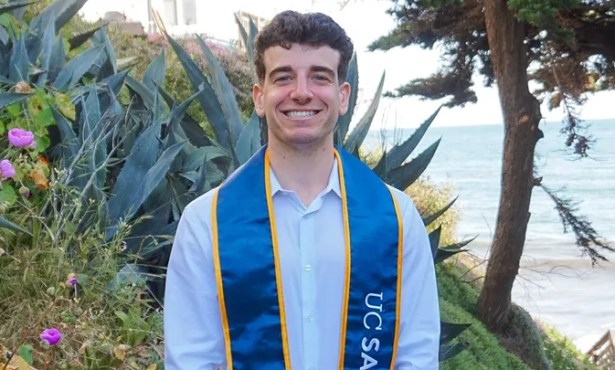Dying Species, Shrinking Habitats
UCSB Study Sheds Light on Biodiversity Debate
For decades, the popular way of mitigating ecosystem destruction and subsequent species extinction has been to run a particular animal or plant up a pop-culture flagpole and rally people to protect individual critters-like California condors, blue whales, or tiger salamanders-rather than to safeguard these species’ habitats and the thousands of lesser-known life forms that live in them. Though well-intentioned, this style of preservation has, for years, been the subject of fierce debate within both the scientific and land-management communities. The crux of the argument has centered on to what degree the biodiversity of a particular environment-whether it be the Arctic tundra, tropical forest, or Central California chaparral-contributes to its productivity in terms of global climate regulation, oxygen production, and water quality.
While popular opinion and practice has long sided with fighting to protect bigger, better-known, and dominant species as means of providing ecosystem stability, a new study coming out of UC Santa Barbara suggests that not only have we been doing it all wrong but, more importantly, this particular preservation technique has a potentially horrific widespread impact for the future of our planet’s health. As lead author of the study, UCSB professor Brad Cardinale explained recently, “Basically, what we are doing is putting in jeopardy nature’s ability to do the very things we and every other living thing needs to survive, like produce oxygen.”
Published last week in the esteemed journal Proceedings of the National Academy of Sciences, Cardinale and his colleagues’ work suggests that species extinction-no matter what type of species it may be-can reduce the productivity of the world’s plants by as much as 50 percent, no matter where they grow. Simply put, the loss of biodiversity has a profound impact on an entire ecosystem’s ability to sustain life. While the notion of biodiversity as a key contributor to ecosystem production is nothing new, the degree to which the first informs the latter is news to everybody on either side of the preservation debate, Cardinale said. “These numbers are a lot larger than what we expected when we first started out. : In fact, 50 percent probably underestimates the true number for places like rain forests. : We now know conclusively that every species contributes in a unique, complementary, and very important way. This completely changes our method of land management and conservation; we need to preserve entire ecosystems, or else.” When asked to put this discovery in local terms, Cardinale didn’t hesitate. “Imagine waking up tomorrow and you look out at the Santa Ynez Mountains and it is 50 percent less green than it is today.” Though not measured specifically by the study, the implications of 50 percent less vegetation could seriously hamstring the mountain ecosystem’s ability to produce oxygen, carbon dioxide, food, fiber, and biofuels. Further, the role vegetation plays locally cannot be overstated; it fights mudslides, cleans creek and ocean water, provides habitats for other organisms, and helps clean the atmosphere.
Taking 44 different international studies of habitats ranging from the tundra to the tropics, and reviewing more than 250 papers on the subject, Cardinale and his coworkers-Justin P. Wright, Marc Cadotte, Ian Carroll, Andy Hector, Diane Srivastava, Michel Loreau, and Jerome Weis-put the species-driven findings of dozens of different scientists through a common lens, allowing for a first-of-its-kind glimpse of what biodiversity truly means to ecosystem health. Though they still have years to go before they can get a baseline number on the amount of species within a given environment that are required to sustain maximum productivity-a development that will no doubt make land management of National Parks and protected open spaces much easier-Cardinale feels the new data is impetus enough to effect change. “There is no doubt this could come back to bite us in the butt in some pretty major ways,” warned the doctor. “Much like global warming, the sooner we act, the more likely we are to be able to do something.”



